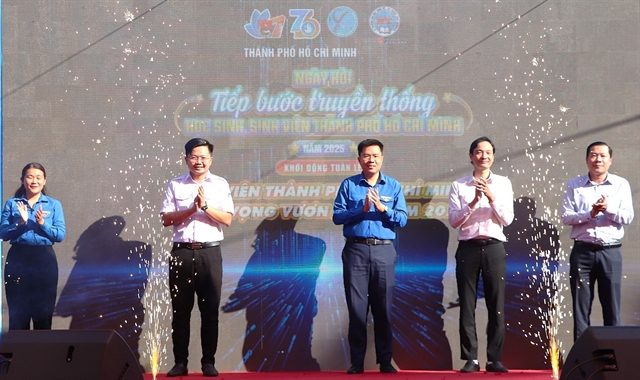 Society
Society

 |
| The new Sắt Village resettlement area features 34 stilt houses with concrete frames, each covering 40 square metres and valued at VNĐ90 million. VNA/VNS Photo Nguyên Linh |
QUẢNG TRỊ — Nestled deep in the lush Trường Sơn mountain range of central Quảng Trị Province, Sắt Village in Trường Sơn Commune now hums with the sound of threshing machines as residents harvest a bumper rice crop under the August sun.
It’s hard to believe that just a few years ago, this peaceful valley was a flood basin, battered by landslides that forced the entire community to abandon their homes and fields for higher ground.
Flood memories
Sắt Village lies in a narrow valley, its red- and green-roofed houses clustered along a golden dirt road. Behind them, terraced fields rise towards mountains blanketed in primary forest.
Before 2020, the rainy season brought fear. Torrents of water from steep slopes surged into the village, flooding doorsteps. Rock faces cracked, threatening collapse.
In October 2020, a historic flood swallowed everything.
“Houses went under, livestock were swept away and the mountain split apart,” village head Hồ Văn Muôn said. “We had to lead everyone to higher ground and live in makeshift shelters.”
Even before the waters receded, Trường Sơn Commune authorities and the Làng Mô Border Guard Station evacuated residents, setting up tents and delivering rice, fish sauce and salt.
For the Bru-Vân Kiều ethnic community, used to hardship, losing homes and farmland was still a deep wound. In the damp temporary shelters, people longed for a sturdy roof and safe land to plant rice and raise their children.
Local authorities and the Border Guard agreed to relocate all 34 households away from landslide-prone areas to a flat site far from the streams.
The resettlement area quickly took shape: 34 stilt houses with concrete frames, wooden panel walls and heat-resistant metal roofs, each 40sq.m and worth VNĐ90 million (US$3,420). Every family received 300sq.m of residential land and nearly eight hectares of paddy fields. This was a gift for those who once only farmed upland plots.
At first, villagers were unsure how to work flooded fields. Border Guard officers taught them every step, such as plowing, transplanting seedlings, managing irrigation and fertilizing crops. Canals diverted water from the stream, transforming dry land into a green expanse.
“In the first harvests, we had to borrow machines. Now we have our own. It’s faster and easier,” Muôn said.
“In the past, the rainy season meant worrying about floods and landslides. Now our houses are sturdy, our fields feed us for the year and we can raise buffalo, cows, pigs and chickens,” said village elder Hồ Linh.
Alongside rice, villagers grow vegetables, raise livestock and plant hybrid acacia for future income.
Sound of a new life
In the early days of the new settlement, Sắt Village still lacked access to the national power grid. The Border Guard installed 30 solar-powered streetlights, illuminating village roads and community spaces. At night, children could safely walk to evening classes and neighbours could gather for cultural events.
“This light doesn’t just brighten the village. It brightens people’s hopes,” said elder Hồ Linh.
 |
| Làng Mô border soldiers present books and notebooks to students in Sắt Village. VNA/VNS Photo Nguyên Linh |
Officers continued training residents in rice farming, livestock husbandry and forestry, joining in during harvest to help thresh and carry grain home.
“Sắt Village is a bulwark of the nation’s border. When the people are secure and prosperous, the frontier is strong,” said Political Officer of the Làng Mô Border Guard Station, Lieutenant Colonel Nguyễn Trung Dũng.
Village head Muôn added: “The Border Guard’s support from production guidance to labour and machinery has lifted living standards. Now people can settle down and focus on building their future.”
Still, challenges remain. The village has yet to connect to the national grid and the road leading in is muddy and uneven in places.
“The face of Sắt has changed dramatically,” said Chairman of Trường Sơn Commune’s People’s Committee Hoàng Mạnh Hà.
“People now have stable homes and better livelihoods. We hope to soon receive investment for concrete roads and grid electricity so the community can thrive in lasting comfort,” he said. — VNS




